Ultimately, I don't know what brought you here, but thank you for visiting during 2009. Many people arrive at this blog by entering a search term in an internet search browser. With tools like Google Analytics, web publishers can know exactly what search terms were used to find our blog. Maybe, just maybe, it was you who typed one of these terms into a search engine and landed here.
30 funny search terms that lead to the Ohio Nature Blog with my attempt at adding funny commentary after each one.
1.is it cold in ohioYes. It is. Mostly from Mid-November through March.
2. are there water moccasins in ohioNo. There were several variations of this basic question.
3. cardinal trying to get into houseAnother frequent question
4. dinosaurs bones found in crawford county ohioAh, no, never happened. All our Ohio rocks are too old for Dinosaurs.
5. found crayfish exoskeleton in my basementjust weird!
6. quercus o'hare airportSomeone looking for Oaks in Chicago?
7. "good job tom"Yes, someone actually found my blog with this search term
8. "grackle" "mating" "funny"someone is searching for funny grackle mating. Isn't that weird?
9. 2009 ohio wildflowers not bloomingI saw them bloom, I swear.
10. "butter butts"In reference to the yellow-rumped warbler.
11. "poop on michigan"Extremely funny. Weston had a poop on Michigan onesy, that, well, he pooped all over.
12. 4-legged shrimp-like creature????
13. a crayfish lives in our backyard lawn in ohioCool. I wish they lived in our backyard too.
14. animal that looks like a black lobster in woods in northeastern ohioWhy so many crayfish and lobster terms?
15. allergies from salamandersI suppose its possible.....but seriously, isn't it more likely dust? Pollen? Perhaps mold?
16. alum creek beach ohio naturist areaNaturist. Not naturalist. This isn't that kind of blog.
17. are freshwater mussels edible in ohioyuck
18. black camouflage fabric amish country ohioSo do they just mean black fabric? If you wear black fabric in Amish country, wouldn't you blend in pretty well?
19. can i feed garlic mustard to my red ear slider turtler (sic)I wonder if this person tried. I don't think they'd like it.
20. can i let my 4 year old pet slider turtle go in a small pond in ohioNO, NO, NO. This is why we have so many feral turtles swimming around the Olentangy and other bodies of water. I get this question ALL the time.
21. dawn wallpaper stripperWhen I first looked at this, I read dawn stripper and thought once again, not that kind of blog. Then I thought back to my posts on taking down the wallpaper in our family room, and things made much more sense.
22. my son ate amur honeysuckle what should i doouch! I hope my son never eats amur honeysuckle, because I'm not sure what I would do either.
23. nature girls picyes, there are pictures of nature loving females here at this blog, but again, I'm thinking this is not what this person was after.
24. picture there she blowsditto
25. ohio birds feeding them shrimpgross and really smelly
26. ohio golf blogthis is what I get for my "Ohio Nature Blog" becomes the "Ohio Golf Blog" april fools day post.
27. pics of a boy and girl, both baldJust one baldy here
28. sharon woods metro park womancreepy
29. state farm audubon center, columbus, ohio
It's the GRANGE insurance center...wrong insurance company!
and last but not least.....
30. stegasaurus at ohio parkhighly unlikely
So there you have it, some search term highlights for 2009. People actually typed these things and landed at the Ohio Nature Blog. And I don't know how you found this little corner of cyberspace, but I'm glad you did. Merry Christmas.
Tom
 A VERY TIRED Santa waits to board a flight to Detroit Michigan (presumably he was destined for a connection further north) from Akron-Canton, 5:30 Christmas morning, 2009.
A VERY TIRED Santa waits to board a flight to Detroit Michigan (presumably he was destined for a connection further north) from Akron-Canton, 5:30 Christmas morning, 2009.







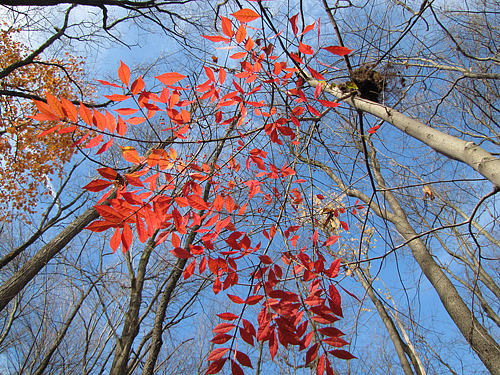
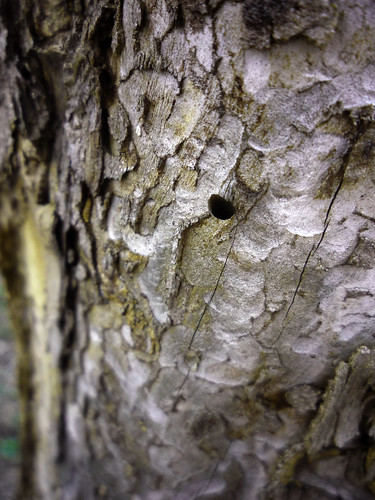
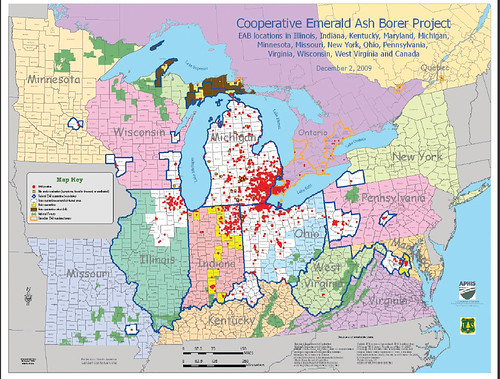

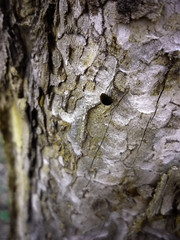
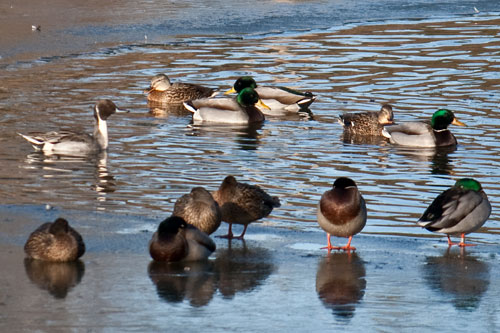 Yesterday afternoon, a beautifully sunny and cold central Ohio day, I stopped at Blendon Woods Metroparks to see what had flown in to Thoreau Lake. There are two great unheated observation buildings at the edge of the lake, and they make bird photography really easy. The building to the right is great for feeder birds, and the left building provides the best opportunities for waterfowl. After scanning the ice free areas of the pond, I could only come up with black ducks, mallards, Canada geese, and two gadwals. But then something caught my eye- a bright white neck. Without binoculars, and without being able to view it with the gigantic metal spotting scope in the building because the bird had positioned itself where it was blocked by the corner support of the building, this bird remained a mystery.
Yesterday afternoon, a beautifully sunny and cold central Ohio day, I stopped at Blendon Woods Metroparks to see what had flown in to Thoreau Lake. There are two great unheated observation buildings at the edge of the lake, and they make bird photography really easy. The building to the right is great for feeder birds, and the left building provides the best opportunities for waterfowl. After scanning the ice free areas of the pond, I could only come up with black ducks, mallards, Canada geese, and two gadwals. But then something caught my eye- a bright white neck. Without binoculars, and without being able to view it with the gigantic metal spotting scope in the building because the bird had positioned itself where it was blocked by the corner support of the building, this bird remained a mystery. 